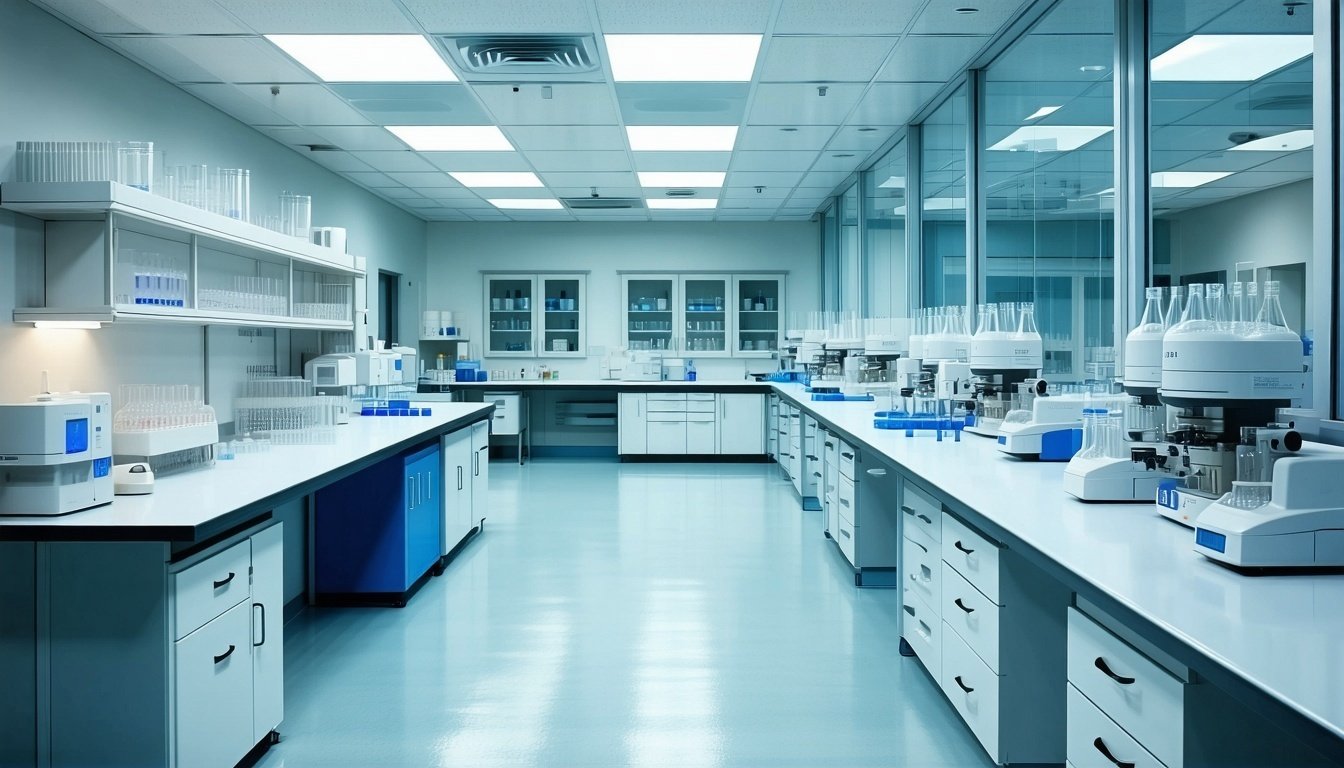Financing Medical Laboratories: Equipment and Technology Investments
Medical laboratories are the backbone of modern diagnostics, playing a crucial role in disease detection, health monitoring, and patient outcomes. But as demand for speed, precision, and innovation grows, labs must continuously invest in new technologies and equipment—often at a high cost. Fortunately, financing options for medical laboratories can help ease the financial burden of growth and modernization.
In this guide, we’ll explore the most practical and strategic funding solutions for clinical and diagnostic labs, helping you improve efficiency, expand services, and stay competitive.
Why Medical Labs Seek Financing
Whether operating independently or as part of a hospital system, medical labs require ongoing investment. From compliance-driven upgrades to adopting next-gen tech, funding helps labs address needs like:
-
Purchasing high-cost diagnostic and testing equipment
-
Expanding into molecular diagnostics, genetics, or toxicology
-
Renovating lab space to meet CLIA or OSHA compliance
-
Hiring and training specialized lab technicians
-
Investing in lab information systems (LIS), EMRs, and automation software
-
Managing working capital and supply chain costs
The right financing strategy can free up capital, reduce risk, and support sustainable lab growth.
What Can You Finance in a Medical Lab?
| Category | Average Cost Range |
|---|---|
| Hematology, chemistry analyzers | $20,000 – $200,000+ |
| Molecular diagnostic systems | $50,000 – $500,000+ |
| Automation & robotics | $100,000 – $1,000,000+ |
| LIS or software integration | $25,000 – $150,000 |
| Facility renovation & buildout | $50,000 – $500,000+ |
| Compliance systems | $10,000 – $75,000 |
| Cold storage & biosafety units | $10,000 – $100,000+ |
Top Loan Options for Medical Laboratories
1. SBA 7(a) and 504 Loans
Best for: Long-term investments like property, equipment, or multi-year expansion.
SBA loans offer government-backed funding with low interest rates and extended terms.
Use for:
-
Real estate purchases or lab construction
-
High-cost equipment
-
Working capital for hiring or supply chain stabilization
Pros:
-
Low rates
-
Long repayment terms (up to 25 years)
Cons: -
Slower approval process
-
Requires solid business financials
🔗 Explore SBA Loan Options
2. Equipment Financing
Best for: Purchasing or upgrading analyzers, PCR systems, centrifuges, and more.
This financing spreads equipment costs over several years. The equipment itself serves as collateral.
Pros:
-
Preserves cash flow
-
May include service contracts
Cons: -
Usually fixed to equipment only
-
May require vendor approval
3. Working Capital Loans
Best for: Short-term operational needs.
Working capital loans help cover temporary expenses such as payroll, reagent orders, and utility costs—especially during reimbursement delays.
Pros:
-
Fast funding (1–3 days in some cases)
-
Flexible usage
Cons: -
Shorter repayment terms
-
Higher interest rates
4. Business Lines of Credit
Best for: Managing cash flow volatility in real time.
Labs experiencing seasonal fluctuations or reimbursement delays benefit from the flexibility of drawing funds as needed and only paying interest on the amount used.
Pros:
-
Revolving access
-
Use funds for any operational need
-
Cons:
-
Variable interest
-
Lower limits without strong credit
5. Vendor and Manufacturer Financing
Best for: Equipment bundles or tech upgrades.
Some equipment manufacturers offer direct financing or lease-to-own agreements for new lab tools. These deals often include:
-
Training and onboarding
-
Service plans
-
Trade-in options
Pros:
-
Fast approvals
-
Flexible packages
Cons: -
Less room for negotiation on terms
6. Healthcare-Specific Lenders
Best for: Labs with unique financial needs or complex payer structures.
Lenders like Panacea Financial, BHG, and Live Oak Bank offer loans designed for healthcare providers and lab facilities.
Pros:
-
Industry-specific terms
-
Understanding of compliance and reimbursement cycles
Cons: -
May charge higher origination fees
Quick List: How to Finance a Medical Lab (in 7 Steps)
-
Define your lab’s funding needs and goals
-
Estimate costs and expected ROI
-
Review your business credit and revenue history
-
Prepare documents (licenses, P&L, tax returns)
-
Compare loan types and lender offers
-
Apply and negotiate terms
-
Use funding strategically to boost lab productivity and compliance
Real-World Example: Expanding a Genomics Lab with Financing
A genomics lab in California used $850,000 in equipment financing and a $250,000 line of credit to expand its molecular testing capabilities. With the addition of next-gen sequencing and automation tools, the lab reduced turnaround time by 40% and increased testing volume by 60% in just six months—resulting in higher contract renewals and improved payer relationships.
Mistakes to Avoid When Financing Lab Upgrades
❌ Skipping ROI evaluation: Ensure every investment leads to cost savings, productivity, or revenue growth.
❌ Underestimating compliance costs: Lab renovations often trigger inspections or new certifications.
❌ Overlooking software integration: New LIS or EMRs must align with your existing IT infrastructure.
❌ Ignoring loan fees and prepayment penalties: These can eat into your long-term savings.
Helpful Resources for Lab Owners and Managers
Conclusion: Powering Lab Growth Through Strategic Financing
From COVID testing to cancer diagnostics, medical labs are at the front lines of innovation. But staying competitive in this fast-moving industry requires constant investment in better tools, smarter workflows, and top-tier talent. Fortunately, with the right financing solution, you don’t have to compromise financial stability for innovation.
Invest in your lab’s future today—funding is not just a resource, it’s a growth strategy.











